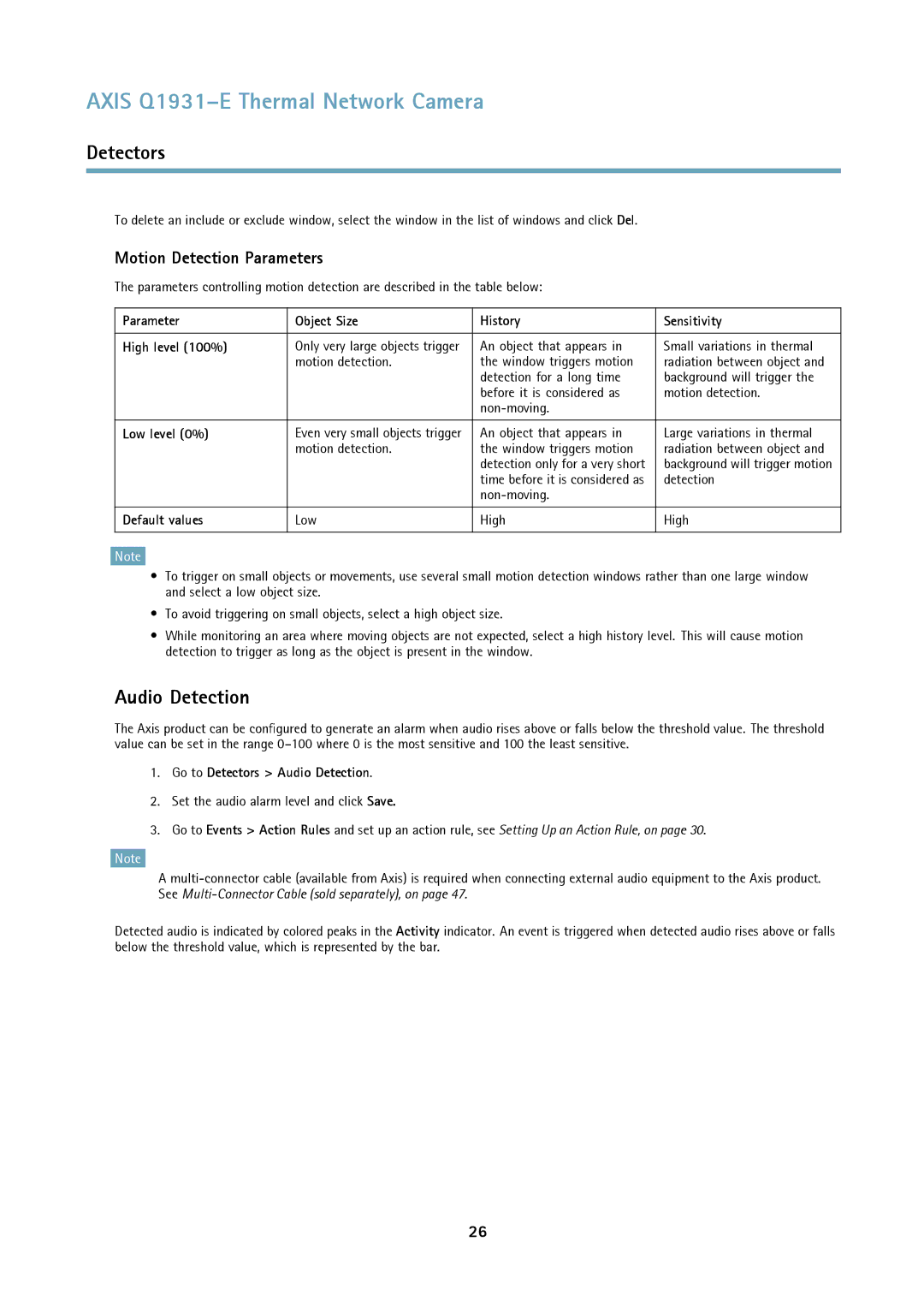
AXIS Q1931–E Thermal Network Camera
Detectors
To delete an include or exclude window, select the window in the list of windows and click Del.
Motion Detection Parameters
The parameters controlling motion detection are described in the table below:
Parameter | Object Size | History | Sensitivity |
|
|
|
|
High level (100%) | Only very large objects trigger | An object that appears in | Small variations in thermal |
| motion detection. | the window triggers motion | radiation between object and |
|
| detection for a long time | background will trigger the |
|
| before it is considered as | motion detection. |
|
|
| |
|
|
|
|
Low level (0%) | Even very small objects trigger | An object that appears in | Large variations in thermal |
| motion detection. | the window triggers motion | radiation between object and |
|
| detection only for a very short | background will trigger motion |
|
| time before it is considered as | detection |
|
|
| |
|
|
|
|
Default values | Low | High | High |
|
|
|
|
Note
•To trigger on small objects or movements, use several small motion detection windows rather than one large window and select a low object size.
•To avoid triggering on small objects, select a high object size.
•While monitoring an area where moving objects are not expected, select a high history level. This will cause motion detection to trigger as long as the object is present in the window.
Audio Detection
The Axis product can be configured to generate an alarm when audio rises above or falls below the threshold value. The threshold value can be set in the range
1.Go to Detectors > Audio Detection.
2.Set the audio alarm level and click Save.
3.Go to Events > Action Rules and set up an action rule, see Setting Up an Action Rule, on page 30.
Note
A
Detected audio is indicated by colored peaks in the Activity indicator. An event is triggered when detected audio rises above or falls below the threshold value, which is represented by the bar.
26
